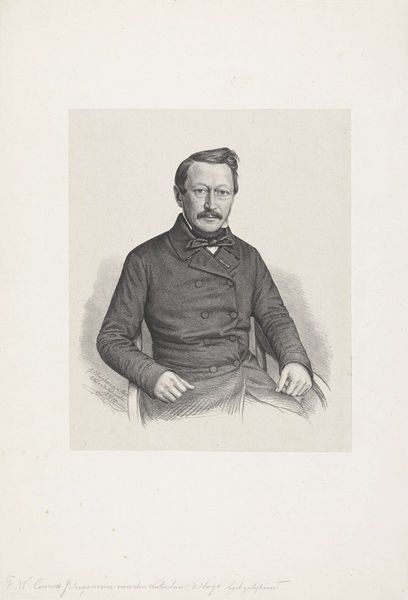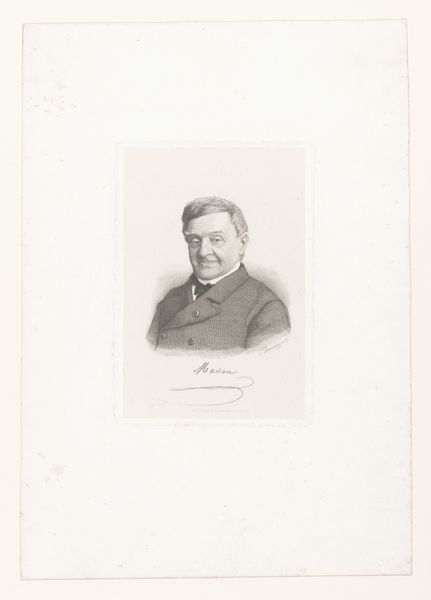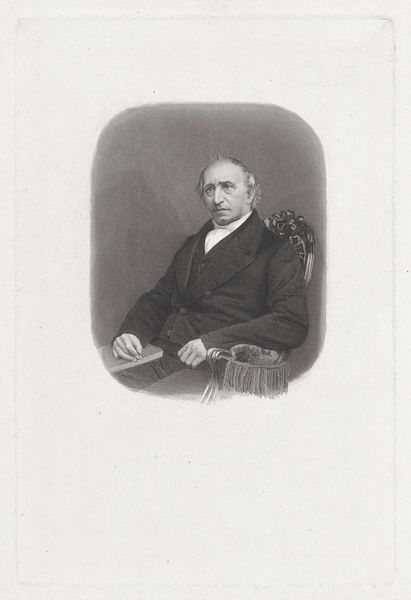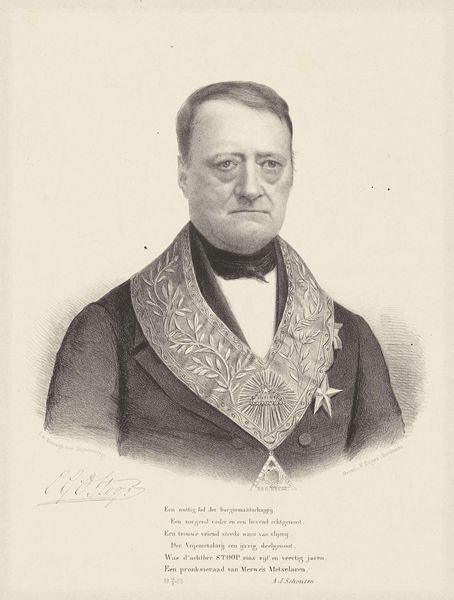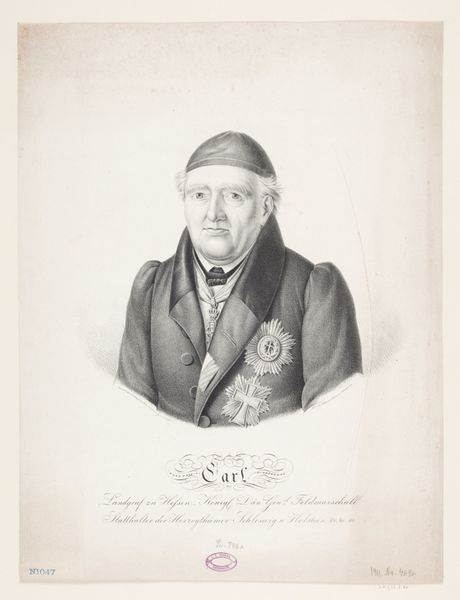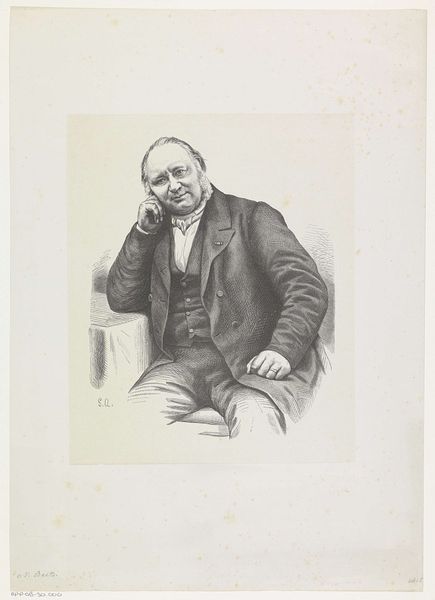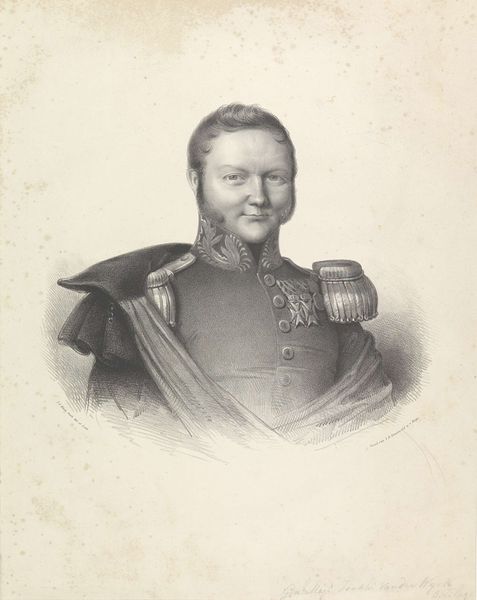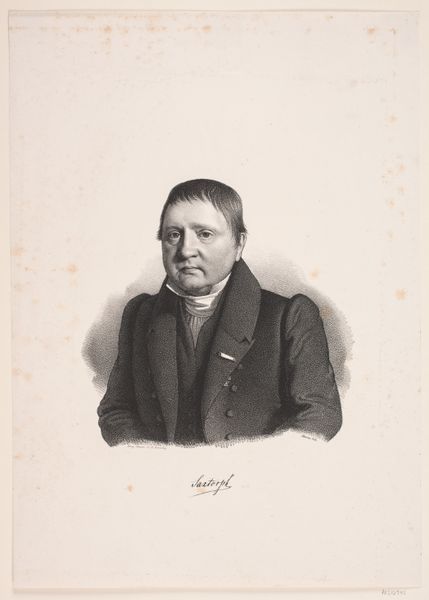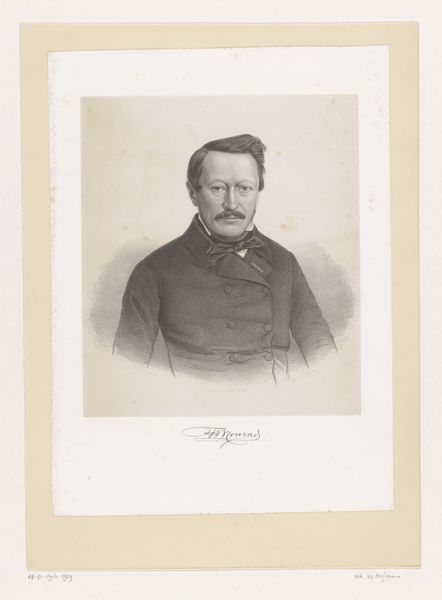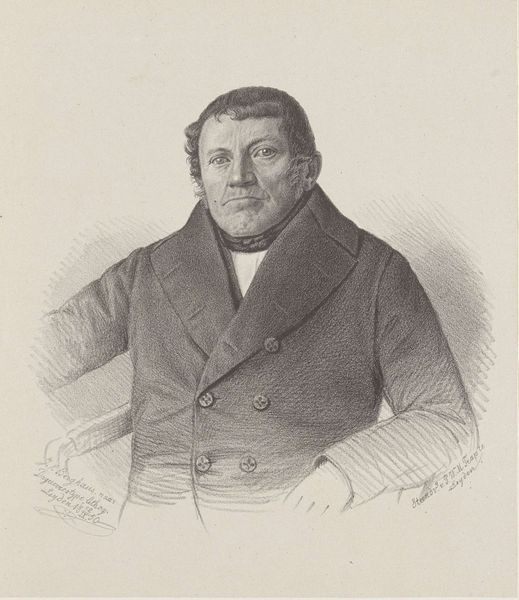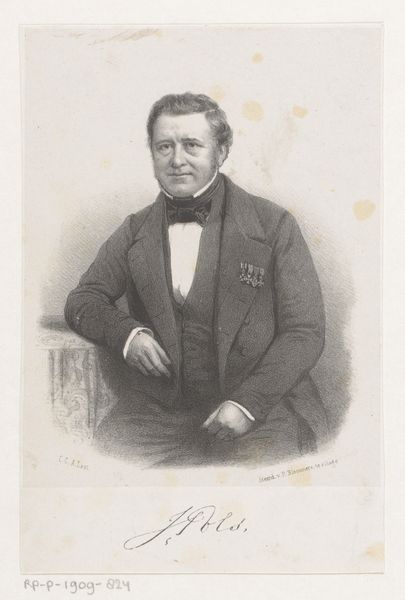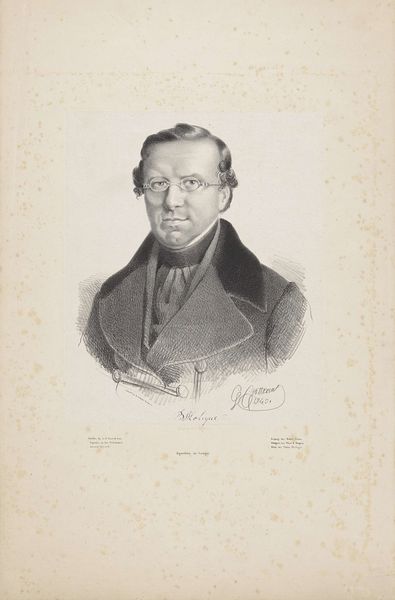
drawing, print, pencil, graphite
#
portrait
#
pencil drawn
#
drawing
# print
#
pencil sketch
#
historical photography
#
pencil drawing
#
pencil
#
graphite
#
portrait drawing
Dimensions: height 363 mm, width 255 mm
Copyright: Rijks Museum: Open Domain
Curator: What a fascinating study in character. Here we have a portrait of Pastor Joh. C.F. de Mol, possibly from 1858, attributed to Johann Peter Berghaus. The work is currently held in the collection of the Rijksmuseum. Editor: It has such a quiet, contemplative mood, doesn't it? The graphite seems to lend it a sense of seriousness, almost austerity. There's a very direct, forthright gaze that commands respect, even in this delicate medium. Curator: Indeed. Graphite offers a subtle vehicle to convey power. Note how Berghaus uses shading to subtly emphasize the sitter’s features, directing our eyes and understanding. The positioning of his hand, holding what looks to be a book of faith, furthers that connection. It is a portrait, and like all portraits, is intended to be interpreted by the cultural milieu to which it is directed. Editor: Precisely! It speaks to the Church's powerful role in mid-19th-century society. But I am intrigued by his serene facial expression. The drawing really captures a sense of his personal faith, maybe his dedication and integrity to religious life—do you agree? Curator: Absolutely. Religious attire holds so much symbolic value. His specific cap and collar immediately signals not only his devotion but also the hierarchical structure to which he belongs. That’s cultural messaging delivered by something as seemingly simple as a wardrobe choice. The Church relied on consistent iconography. Editor: The printed text adds an interesting layer, too. It provides his name, roles as Dean of Noordwijk and Pastor of Sassenheim, and his passing date. I think, though, we are prompted to examine how institutions want to preserve and shape collective memory. This isn’t just a likeness; it is a curated historical document. Curator: Yes, precisely. By visually framing de Mol in this specific manner, the artist reinforces certain perceptions and memories the institutions would have wanted to ensure the culture adopts and keeps. It certainly stimulates deeper contemplation of imagery in historical preservation. Editor: This has opened a rich dialogue between past image and present understanding. I am reminded of how deeply intertwined the individual is with their socio-political context. Curator: Indeed! An artwork like this underscores the continuing dialogue that resonates between visual symbols and enduring values across time.
Comments
No comments
Be the first to comment and join the conversation on the ultimate creative platform.
